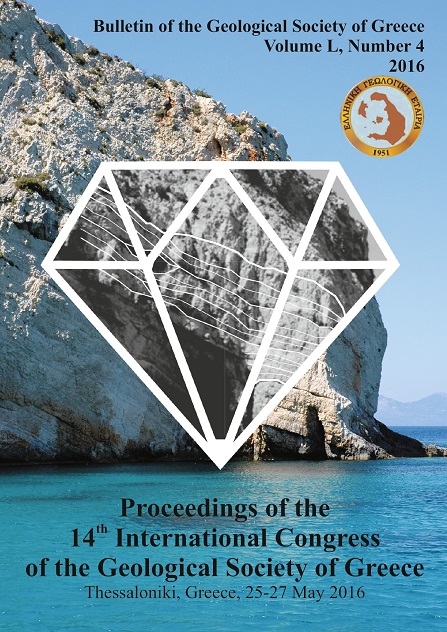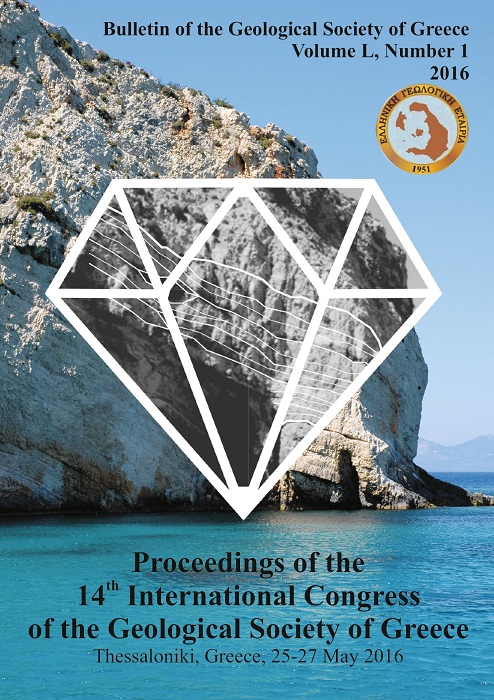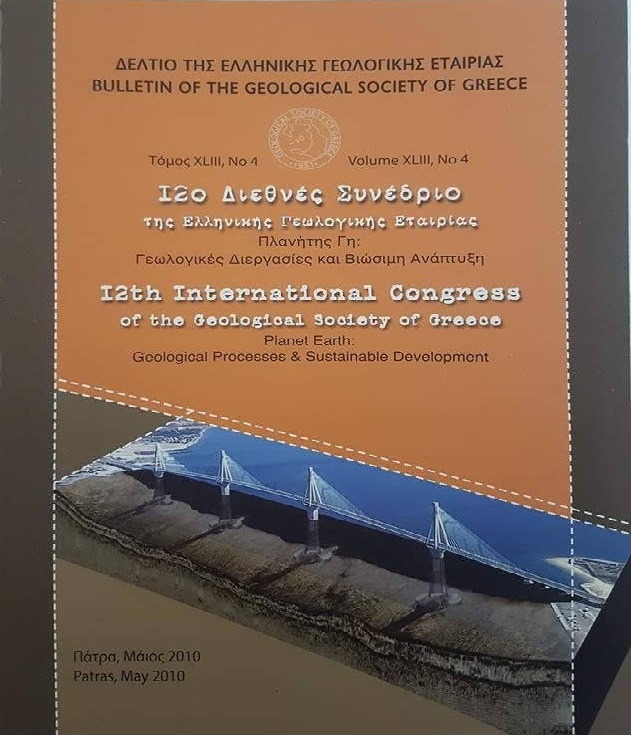KOSMAS-GYTHIO UNIT: A METAMORPHIC CARBONATE SEQUENCE OVERLYING THE PHYLLITES-QUARTZITES UNIT IN SOUTHERN PELOPONNESUS, GREECE.
Περίληψη
New data from southern Peloponnesus show the presence of a metamorphic carbonate sequence sandwiched between the Phyllites Quartzites and the Tyros beds, the permothassic base of the Tripolitza unit. The lithostratigraphic members of this sequence, named Kosmas Gythio unit, are comparable to that of the Plattenkalk unit in Taygetos and Parnon mountains. It is suggested that palaeogeographically the unit belongs to the Ionian basin and its position was between the Plattenkalk unit and the Tripolitza carbonate platform. As for the Phyllites-Quartzites unit it is suggested that this unit is not a metamorphic equivalent to the Tyros Beds or the basement of the Tripolitza platform, but the base or the basement of the Kosmas-Gythio unit, and therefore of the Ionian basin.
Λεπτομέρειες άρθρου
- Πώς να δημιουργήσετε Αναφορές
-
Skourtsos, E., & Lekkas, S. (2004). KOSMAS-GYTHIO UNIT: A METAMORPHIC CARBONATE SEQUENCE OVERLYING THE PHYLLITES-QUARTZITES UNIT IN SOUTHERN PELOPONNESUS, GREECE. Δελτίο της Ελληνικής Γεωλογικής Εταιρείας, 36(4), 1679–1687. https://doi.org/10.12681/bgsg.16574
- Ενότητα
- Τεκτονική και Γεωδυναμική

Αυτή η εργασία είναι αδειοδοτημένη υπό το CC Αναφορά Δημιουργού – Μη Εμπορική Χρήση 4.0.
Οι συγγραφείς θα πρέπει να είναι σύμφωνοι με τα παρακάτω: Οι συγγραφείς των άρθρων που δημοσιεύονται στο περιοδικό διατηρούν τα δικαιώματα πνευματικής ιδιοκτησίας επί των άρθρων τους, δίνοντας στο περιοδικό το δικαίωμα της πρώτης δημοσίευσης. Άρθρα που δημοσιεύονται στο περιοδικό διατίθενται με άδεια Creative Commons 4.0 Non Commercial και σύμφωνα με την οποία μπορούν να χρησιμοποιούνται ελεύθερα, με αναφορά στο/στη συγγραφέα και στην πρώτη δημοσίευση για μη κερδοσκοπικούς σκοπούς. Οι συγγραφείς μπορούν να: Μοιραστούν — αντιγράψουν και αναδιανέμουν το υλικό με κάθε μέσο και τρόπο, Προσαρμόσουν — αναμείξουν, τροποποιήσουν και δημιουργήσουν πάνω στο υλικό.








